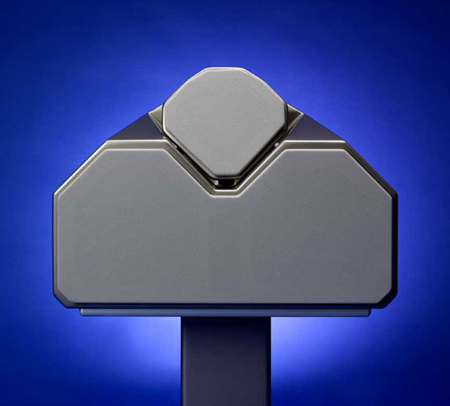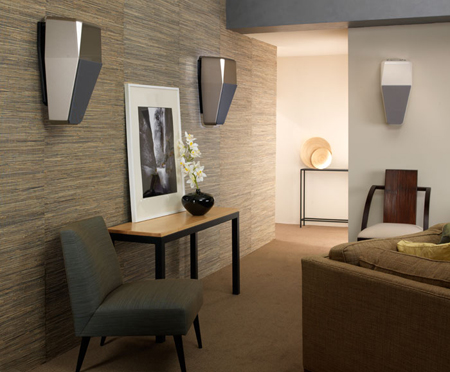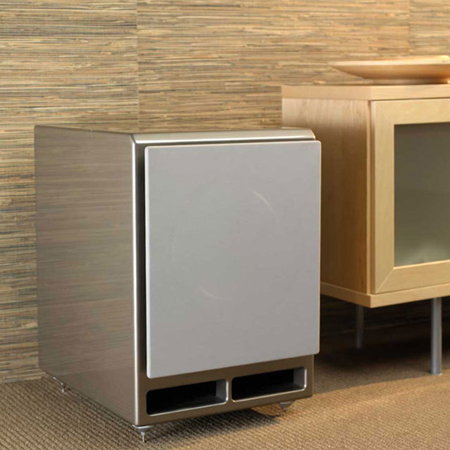Is it Live or Wilson?


The second-generation WATCH Center has 30 percent more enclosure volume than its predecessor without increasing the cabinet's footprint—though it is a bit taller—providing greater bass extension. Two midrange/woofer drivers from the Sophia speakers lend the WATCH Center the same midrange speed and punch as the MAXX 2.

The Center's tweeter is the same one used in the WATT/Puppy 8 and MAXX 2, and it's adjustable position lets you align its phase with that of the left and right speakers for a seamless, coherent soundfield. An anti-jitter crossover derived form Wilson's larger speakers is said to deliver the same grain-free transparency, allowing dialog to emerge from a truly "black" background with unprecedented clarity and dimensionality.

Like the Center, the second-gen WATCH Surround is larger on the inside—50 percent larger in this case—increasing bass extension by a full octave and widening the dynamic range. In addition, the wall mount has been redesigned to better decouple the speaker from the wall and provide a greater range of tilt and rotation.

The original WATCH Dog subwoofer was powered with an internal amplifier, but after conducting extensive listening tests, Wilson decided that the best sound was achieved when all speakers—including the sub—were powered by matching amps. Thus, the new WATCH Dog is passive, requiring an external amp. Removing the onboard amp allows the cabinet to 40 percent smaller than its predecessor while maintaining the same internal volume.

Essential to the sub's operation is the WATCH Controller, which provides a sophisticated crossover between the main speakers and the sub, allowing one system to serve 2-channel music and multichannel movie soundtracks. In multichannel mode, it passes the surround processor's LFE signal to the sub, whereas in 2-channel mode, it becomes a full-fledged crossover and bass equalizer. The crossover frequency and slope are adjustable with continuously variable phase, and the EQ can minimize room-induced colorations and standing waves.

If you know Wilson products at all, you know they aren't inexpensive. A complete WATCH system carries a price tag of nearly $30,000 for everything but the main L/R speakers in a 5.1 system. And what about those main L/R speakers? They'll set you back anywhere from $13,400 for a pair of bookshelf/in-cabinet Duettes to $158,000 for the mighty Alexandria X2s. Then there's the surround processor and amplification, which, for a system such as this, will certainly be in the five figures at least.

Is the sound of the Wilson system so much better than everything else that such astronomical prices are justified? Let me tell you a true story that illustrates why I believe it is. Many years ago, I was attending the Stereophile Hi-Fi Show at a big hotel near the Los Angeles International Airport. As I was walking down a hallway, I heard music coming from a crowded hotel room—not unusual at the Hi-Fi Show. However, my first thought at hearing that music was most unusual—"I wonder why they have live musicians in there?"

Of course, there were no live musicians in there. Instead, it was a high-end audio system with Wilson WAMM speakers, which were able to fool me—a professional musician—into thinking that a live band was playing in a hotel room crammed full of people. That sense of realism alone makes Wilson speakers worth every penny to those who can afford them.

Does a $150,000 speaker system sound twice as good as a $75,000 system? Probably not. As with almost everything, improvements in performance become more incremental as cost increases beyond a certain threshold. But at some point, the performance exceeds a threshold of its own, and reproduced sound becomes something more than it was before. That's the magic of Wilson speakers.





























































